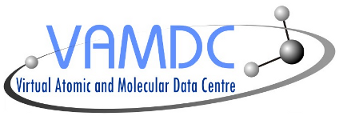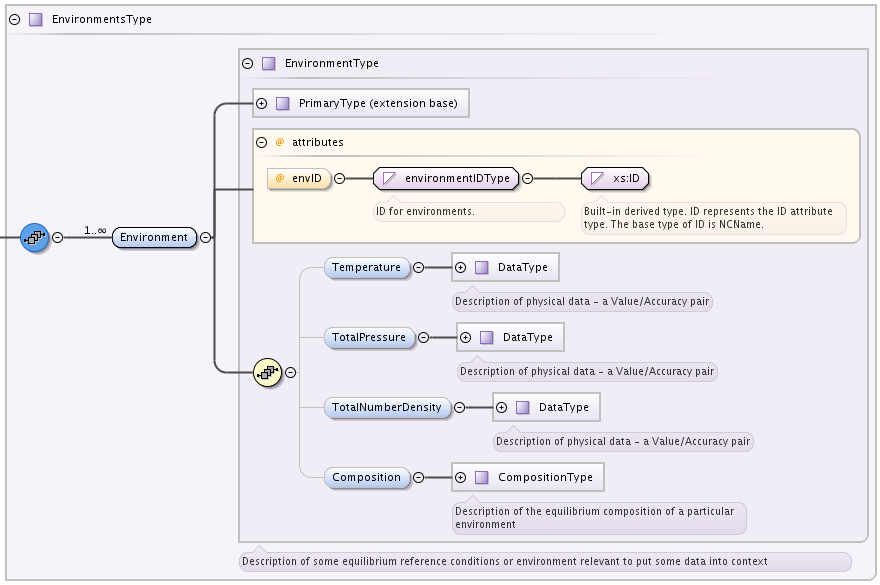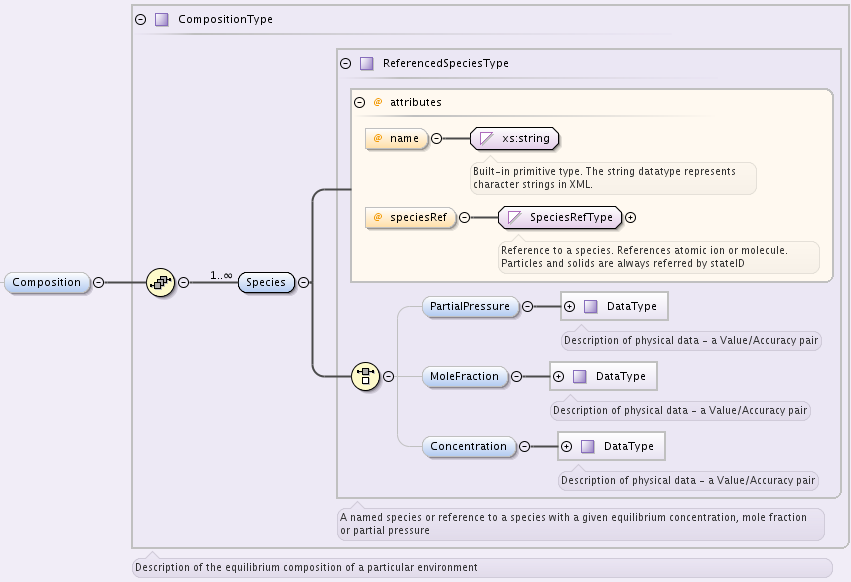

XSAMS environments section was first introduced to VAMDC-XSAMS, along with radiative transition line shiftings and broadenings. Currently environments are only used to describe broadening and shifting environment conditions.
Each environment is fully described by a single Environment element of type EnvironmentType

Environment element extends primary type, so reference and method data may be specified.
Environment branch has the following elements and attributes:
- mandatory envID attribute. The string identifier starting from letter E, to be referenced from radiative transitions.
- optional Comments element, derived from PrimaryType. It is useful to put verbose environment description there.
- optional Temperature element of type DataType.
- optional TotalPressure element of type DataType.
- optional TotalNumberDensity element of type DataType.
- optional Composition element. This element allows to description of environment components, e.g. perturber gases.
Composition element may describe various kinds of compositions: gas mixture, liquid solution, solid composition, etc.

Composition has one or more Species elements, each of them of ReferencedSpecieType type.
ReferencedSpecieType allows to define either species name, or speciesRef reference in corresponding optional attributes. SpeciesRef may point through speciesID attribute either to atomic ion record or to molecule record in Species branch of XSAMS. Both attributes may be defined, in this case name should correspond to atom or molecule pointed by reference.
Component presence measure can be defined by one of the optional elements:
- PartialPressure
- MoleFraction
- Concentration
each of type DataType. Only one of them may be present in a component record. To avoid confusion, all components of composition should define the abundance in the same type of elements.
Example XML instances of Environment:
<Environment envID="EHITRAN_refT">
<Comments>the HITRAN reference temperature, 296 K</Comments>
<Temperature>
<Value units="K">296.</Value>
</Temperature>
</Environment>
<Environment envID="EHITRAN_refpT">
<Comments>the HITRAN reference pressure and temperature, 1 atm and 296 K</Comments>
<Temperature>
<Value units="K">296.</Value>
</Temperature>
<TotalPressure>
<Value units="atm">1.</Value>
</TotalPressure>
</Environment>
<Environment envID="Eair-broadening-ref-env">
<Comments>the HITRAN air-broadening reference conditions</Comments>
<Temperature>
<Value units="K">296.</Value>
</Temperature>
<TotalPressure>
<Value units="atm">1.</Value>
</TotalPressure>
<Composition>
<Species name="N2">
<MoleFraction>
<Value units="unitless">0.79</Value>
</MoleFraction>
</Species>
<Species name="O2">
<MoleFraction>
<Value units="unitless">0.21</Value>
</MoleFraction>
</Species>
</Composition>
</Environment>
<Environment envID="Eself-broadening-ref-env">
<Comments>the HITRAN self-broadening reference conditions</Comments>
<Temperature>
<Value units="K">296.</Value>
</Temperature>
<TotalPressure>
<Value units="atm">1.</Value>
</TotalPressure>
<Composition>
<Species name="self">
<MoleFraction>
<Value units="unitless">1.</Value>
</MoleFraction>
</Species>
</Composition>
</Environment>